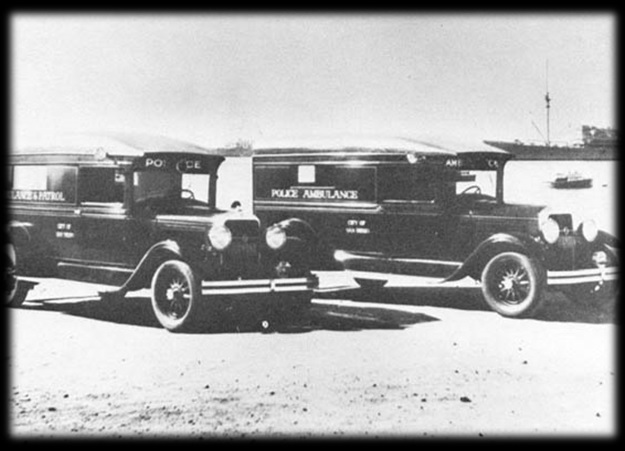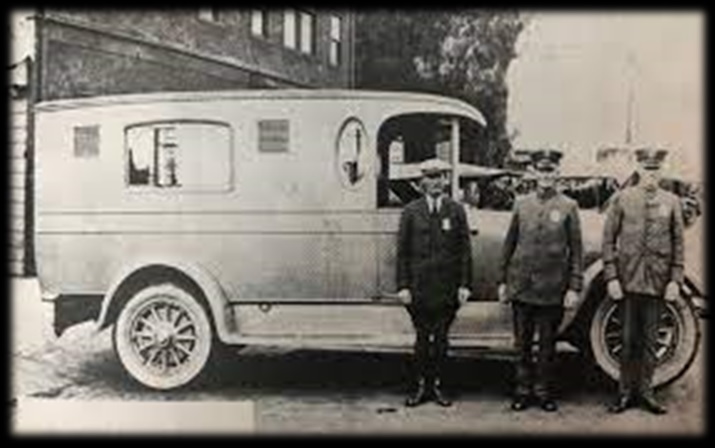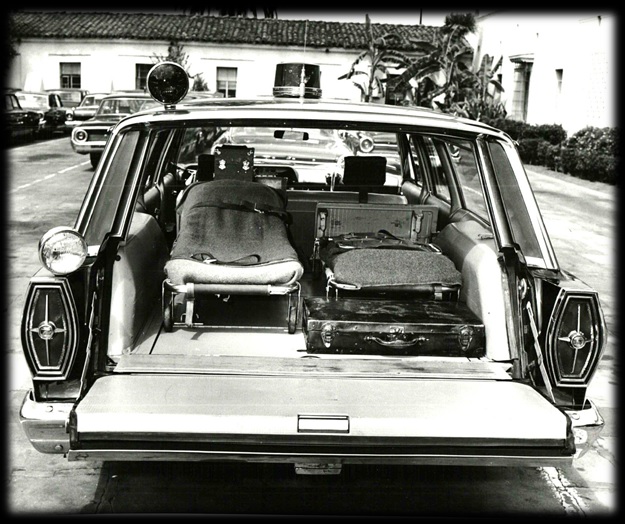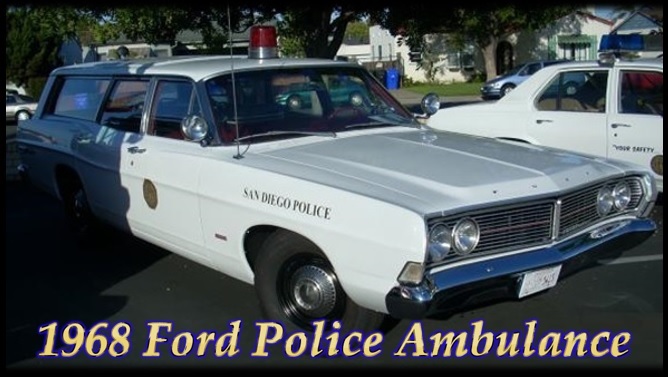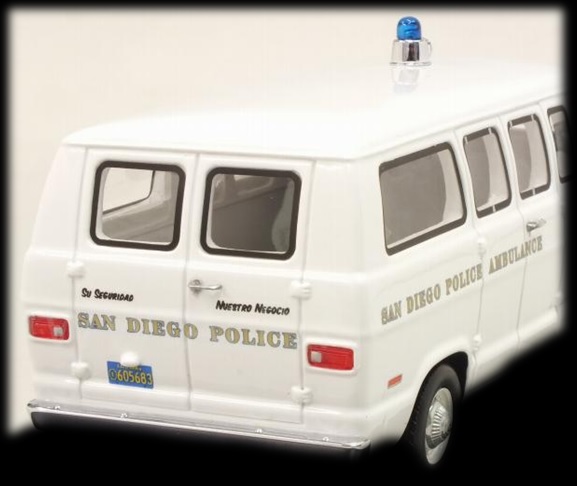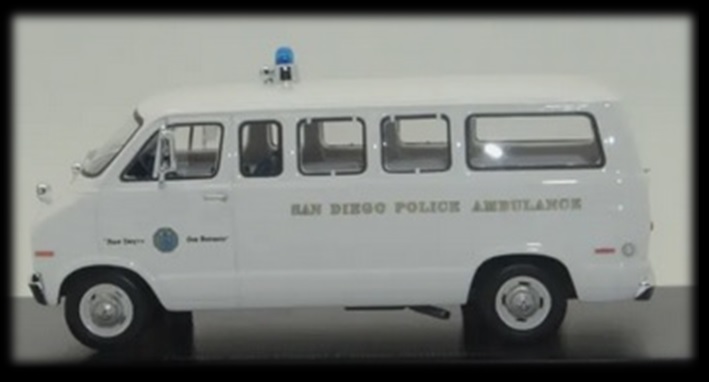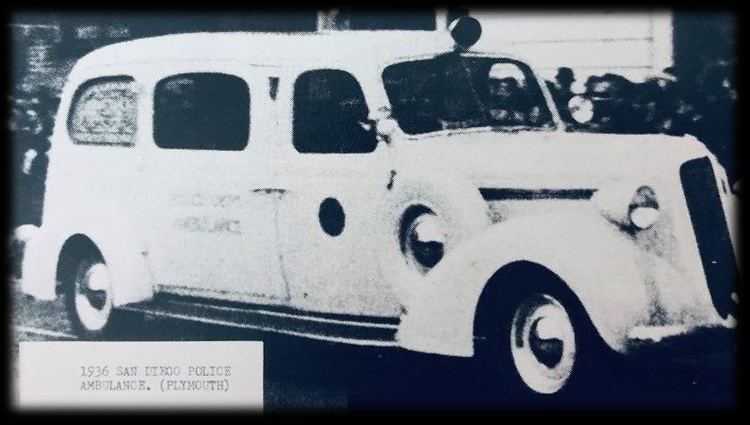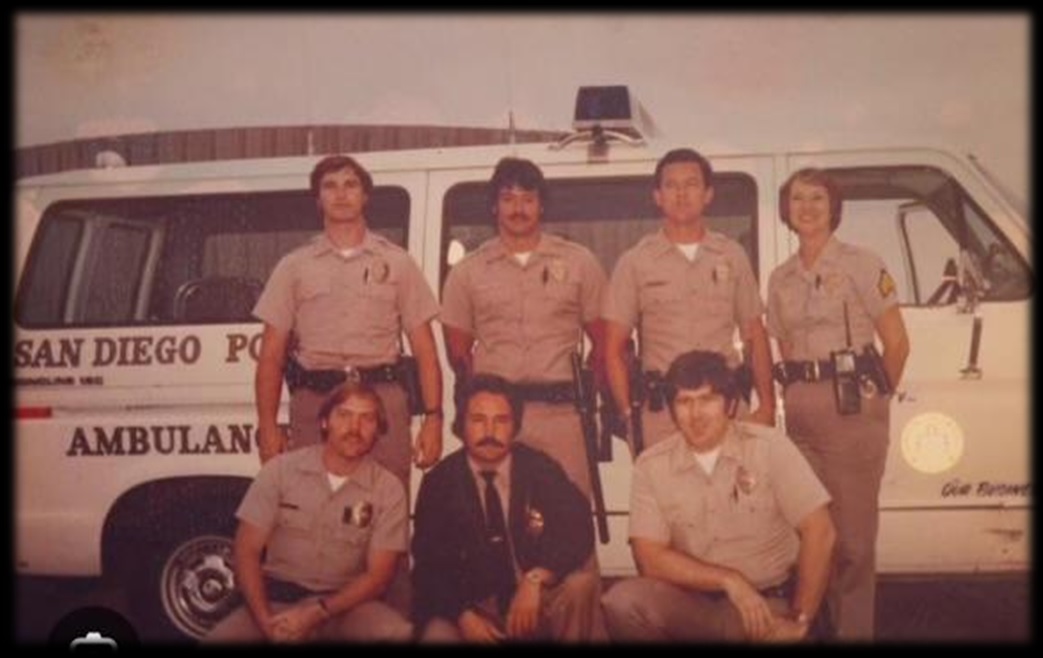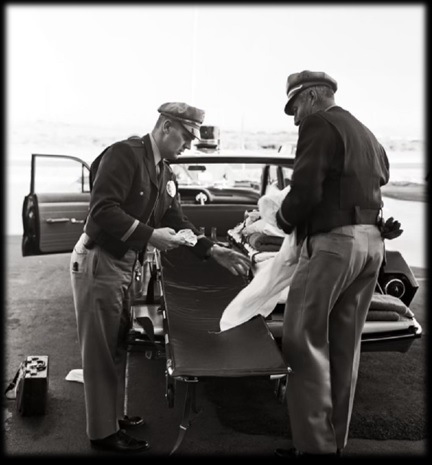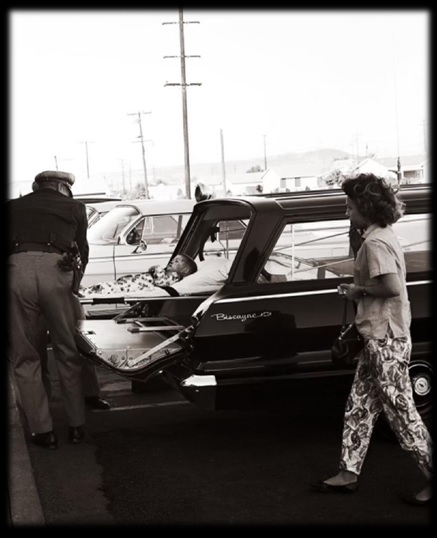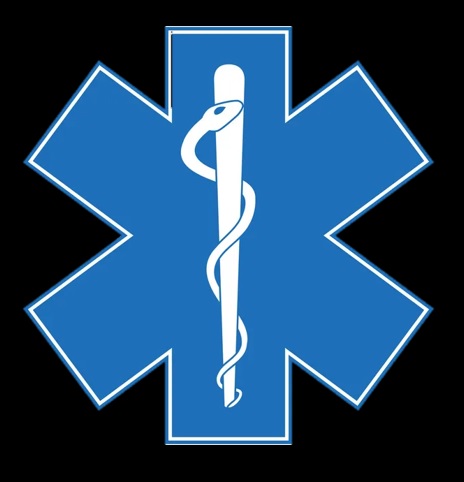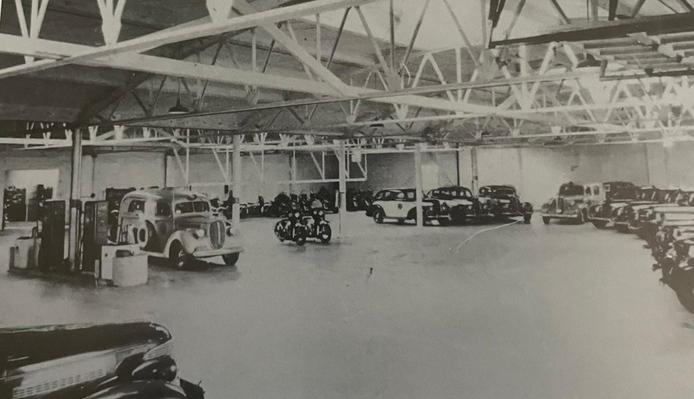The San Diego Police Department has a long history of ambulance service in the city of San Diego.
May 1911: The San Diego Union revealed plans to open an Ermerency Hospital at SDPD headquarters.
1938: Three year officer Bert Ritchey, a pioneering Black policeman, was assigned to overnight police ambulance duty.
1946: Police Surgeon, Dr. Paul Brust M.D., a regular on the police ambulance crew, retired from the SDPD.
April 1950: City Manager Campbell cut $17,000 from SDPD's ambulance budget then asked the City Council to privatize the service. Under the plan SDPD supervised the service and fielded calls. Ambulance companies collected fees from patients.
1953: Officer Paul E. Hartson and his brother Bob founded Air City Ambulance Service, later renamed as Harston Ambulance.
1960: SDPD became a leader in public safety by providing full time, city wide ambulance coverage. Every officer assigned to a police ambulance held an advanced First Aid Card.
August 1961: City Attorney prohibits three ambulance companies from operating after allegations that all are owned by one person under different company names.
1970's: All SDPD officers were trained and certified Emergency Medical Technicians. That threshold would prove problematic. To maintain the certification officers were required to spend 18 hours working in a hospital ER every three months to keep up their EMT certification.
1980: The staffing issues lead the SDPD to turn the ambulance service over to the Fire Department in the early 1980s.
A major development with the San Diego Police Department was accomplished by a police officer Glenn "Bud" Hare.
There was a device called a Thomas Half Ring Splint that was used to immobilize a victims upper leg that had suffered a fracture of the femur. It was difficult to use and Officer Hare invented a much more efficient version that's still used today world wide. Hare went on to open his own medical supply company and continued to improve medical procedures for many years.
In the 1920s there was a new group of vehicles from Packard to Studebaker and many brands in between.
The vehicles were constructed in many shapes so they would provide more room, work area and convenience for loading and off loading of patients and personnel.
Many of them served a dual purpose as a prisoner transport vehicle and transportation to and from the officers beat. The continious improvements saved many lives.
1960. Station wagon ambulances were advanced for thier time and equipped with the latest emergency equipment. There was approximately one ambulance on patrol for every five regular patrol cars. The ratio placed the ambulances close to medical emergencies. When not in use as an ambulance the vehicles conducted regular police duties.
SDPD abandoned the traditional, authoritative black & white car in 1968. Ambulances were the first to adopt the all white paint scheme. One issue that wasn't addressed was the low sitting station wagons lead to many officers suffering back injuuries from lifting the gurneys in and out of the vehicles.
As vans became more available in the 1970s, the San Diego Police Department began a shift from the station wagon as its ambulance. For police ambulances assigned to work Logan Heights, the department's motto of "Your Safety, Our Business" was translated to "tu seguridad nuestro negocio" on the vehicles.
The late Sergeant Frank Kral was tasked with designing and building these vans using the San Diego Police Garage Mechanics to complete the work. Officer Rick Carlson was assigned to assist Sergeant Kral.
A lot of effort and research went into the design and construction.
1920's SDPD ambulance crew at the Old East San Diego City Hall, 4254 University Ave.
1936 San Diego Police Ambulance.
Late 1970's police ambulance crew. (Upper Left) Unknown, Officer Blake Hoffman, Unknown, Sergeant Tommy Powell.
Lower row, Unknown, Officer Mike Dean, Officer Alan Rubin.
Police Ambulance at the gas pumps, 801 W. Market St. Circa 1940
Early 1960's Police Ambulance on a
medical assistance call.



